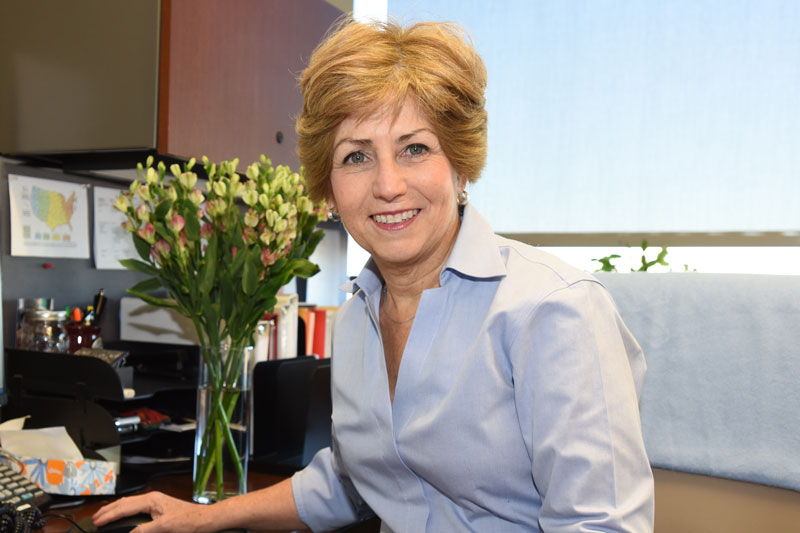Sleep-Wake Disturbances in Patients With Cancer
In bedrooms across the United States, people are crawling into bed, turning down the lights, and lying awake for hours on end. Sleep-wake disturbances and short sleep duration are extremely common, and rates are even higher in patients with cancer.
Unfortunately, screening, assessment, and interventions are lacking for patients experiencing sleep-wake disturbances during their cancer journey. The ill effects associated with sleep-wake disturbances can lead to negative consequences and potentially worse quality of life for patients with cancer. Oncology nurses can be a vital voice for their patients by educating, providing resources, and starting the conversation on the impact of sleep-wake disturbances in cancer care.
Identifying Sleep-Wake Disturbances
It’s important to recognize the distinction between sleep disorders and sleep-wake disturbances. A sleep disorder is a professionally diagnosed clinical disorder, whereas sleep-wake disturbances are issues in patients that have yet to be identified and diagnosed by a healthcare professional. The most common sleep disorders in oncology populations are insomnia, obstructive sleep apnea, restless leg syndrome, and circadian rhythm disorders. Sleep-wake disturbances are perceived or actual issues that impact sleep quality and quantity, which, in turn, affect daytime functioning.
ONS member and coauthor of this month’s Clinical Journal of Oncology Nursing (CJON) article about sleep-wake disturbances in patients with cancer (https://doi.org/10.1188/18.CJON.37-52), Ann Berger, PhD, APRN-CNS, AOCNS®, FAAN, professor and Dorothy Hodges Olson Endowed Chair at the University of Nebraska Medical Center (UNMC) College of Nursing in Omaha, notes the clear lack of screening for sleep-wake disturbances in patients with cancer. She also is affiliated as a clinical nurse specialist in oncology at the UNMC Fred and Pamela Buffett Cancer Center.

“It’s difficult to estimate the prevalence of sleep-wake disturbances in patients with cancer, because assessments and screenings aren’t performed routinely in practice,” Berger says. “Numerous studies suggest that sleep disturbances are higher in patients with cancer (https://doi.org/10.1188/09.ONF.E165-E177), anywhere from 30%–80% in all cancer populations. That’s compared to rates of sleep disturbances in the general population, which is somewhere around 10%–15%. But unfortunately, most oncology clinics aren’t screening for sleep-wake disturbances.”
ONS member Ellyn Matthews, PhD, RN, AOCNS®, CBSM, FAAN, associate professor and Elizabeth Cooper Endowed Chair in Oncology Nursing at the University of Arkansas for Medical Sciences College of Nursing and primary author of the CJON article, recognizes that conversations about sleep-wake disturbances are suboptimal at best.

“Providers aren’t asking and patients aren’t talking about sleep problems,” Matthews says. “Unfortunately, providers sometimes have only a 15-minute window to address issues with patients and have to prioritize. There are many reasons screening doesn’t happen, and providers might not realize the impact that sleep disturbances are having on patients if patients never bring it up.”
Beyond the lack of conversation surrounding sleep-wake disturbances, providers might not be equipped to help patients even if sleep issues are reported.
“With other patient issues, it’s much clearer what you do about them—whether it’s low blood counts, infection, or others. These often have clear treatment algorithms,” Matthews says. “With sleep issues, it can take time to understand patients’ problems and then put them in touch with sleep experts. And those experts might not be readily available, depending on the size of the institution.”
Both Berger and Matthews agree that the focus needs to be on starting the conversation with patients. By asking questions, oncology nurses can understand the extent to which sleep-wake disturbances are affecting patients’ well-being and treatment.
The Detriments of Sleeplessness
According to Berger and Matthews, sleep-wake disturbances can directly impact mood, cognitive functioning, fatigue level, and response to cancer treatments. Ultimately, the effects of sleep-wake disturbances are multidimensional for patients with cancer.
“The impact of poor sleep includes changes to daytime functioning in all of a patient’s aspects or roles,” Berger says. “This includes his or her physical status, emotional status, social status, mental processing, and overall quality of life.”
Matthews recognizes that sleep issues ripple into nearly all aspect of daily life.
“The consequences of acute and chronic sleep-wake disturbances include daytime fatigue, irritable mood, and cognitive impairment,” Matthews says. “These often lead to negative impacts on a patient’s social life, daily functioning, and quality of life.”
Matthews also notes that when patients don’t get the sleep they need, they attempt to correct it the following night. They’ll go to bed earlier to “catch up” on sleep and begin the unfortunate cycle of poor or disturbed sleep.
“Many patients will have a bad night’s sleep and want to compensate,” Matthews says. “They’ll go to bed earlier the following night, even though they’re not ready. That starts the cycle of more and more problems. They’ll think, ‘This is the second night I haven’t slept,’ and they become far more anxious about it.”
Currently, not many studies have been conducted to identify the prevalence of sleep problems in individual subtypes of cancer. However, some studies have investigated patients undergoing radiation therapy and chemotherapy.
“When there’s been research, the greater majority—80%–90% of patients—who are receiving radiation therapy or chemotherapy report changes in their sleep,” Berger cites. “Most of the research has been done in breast cancer, but in many other kinds of cancer sleep issues may be more or less prevalent. Some research has indicated that patients with lung or brain cancer are showing higher indications of sleep issues than breast cancer.”
Moreover, according to the Division of Sleep Medicine at Harvard Medical School (http://healthysleep.med.harvard.edu/healthy/matters/consequences/sleep-and-disease-risk), insufficient sleep can also be related to increased risk of comorbidities like obesity, type-2 diabetes, hypertension, cardiovascular disease, and lower life expectancy.
Addressing Sleep-Wake Disturbances in Your Patients
If patients report issues with sleep, oncology nurses are in a prime position to help them find the resources, education, and potential treatment they need. According to Berger, it all starts with sharing knowledge and addressing behaviors.
Both Berger and Matthews recognize the importance of implementing screening and assessment for sleep-wake disturbances into oncology practice.
“In the past, we would focus on improving their daytime symptoms like fatigue, but that doesn’t get to the root of the sleep problem,” Berger says. “Ruling out obstructive sleep apnea is the first step. There are screening tools to rule out sleep apnea—STOP-BANG is one—which can be used in oncology clinics to screen for apnea. Once that’s determined, every oncology nurse can pull from the National Comprehensive Cancer Network guidelines for survivorship (https://www.nccn.org/professionals/physician_gls/pdf/survivorship.pdf), which has a section devoted to sleep disorders. The information on screening, assessment, testing, diagnosis, and treatment is ready for adoption in clinical practice. Nurses can create a great baseline, so patients can understand if they need more specialized care.”
According to Matthews, “If you don’t ask your patients about it, you’re not going to be able to get a handle on addressing it. Nurses can make an enormous difference in the quality of life of their patients by recognizing the significant number of patients suffering from sleep issues. Using available measures, like ONS’s Putting Evidence Into Practice resources, can help nurses evaluate and address the severity of sleep-wake disturbances in patients.”
Matthews and Berger both recognize that sleep medications and hypnotics are available to patients. However, they recommend avoiding the use of hypnotics to treat patients for any time longer than a five- to seven-day window.
The Future of Sleep-Wake Disturbances
Implementing new and existing evidence-based measures into oncology practice is the next step in addressing sleep-wake disturbances in patients.
“As interventions evolve, clinicians will be challenged to evaluate the evidence and integrate the most effective interventions into practice,” Matthew says. “Implementing sleep programs in cancer and non-cancer populations is a crucial next step. Moreover, emerging information indicates that sleep disturbances can have an economic impact as well, which may affect patients and providers.”
Berger notes that the population of cancer survivors is growing daily. That means nurses will have to support their patients through treatment and beyond, addressing sleep-wake disturbances in the survivorship community.
“The number of cancer survivors is already more than 14 million. Sleep disturbances aren’t a short-term issue for patients. If we don’t catch them early, they will perpetuate,” Berger says. “Poor sleep increases the risk factors for a number of other health issues, including cardiovascular disease and diabetes. We’re thrilled our patients are surviving treatment, but we don’t want them to be at a higher risk for other potential causes of death.”
Starting the conversation about sleep with your patients is a vital first step to addressing sleep-wake disturbances. Oncology nurses are the first responders when their patients present with side effects during their cancer treatment. Help your patients get the rest they need through education, resources, and evidence-based interventions.
